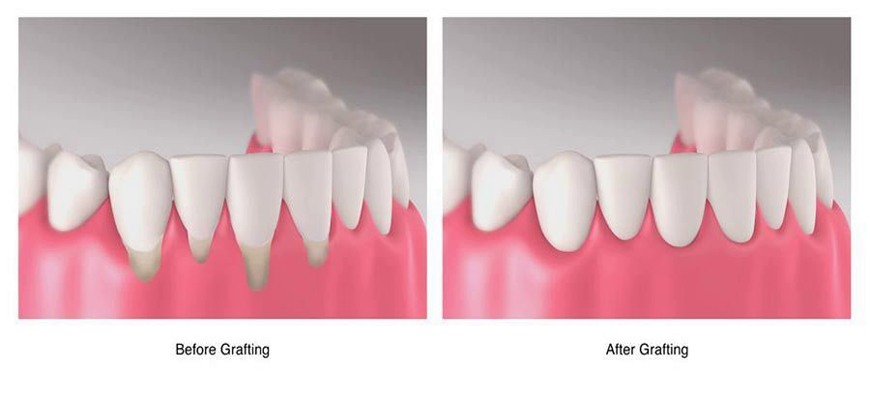Plastic Surgery (Gum Grafts)

Periodontal plastic surgery can successfully deal with problems such as excessive recession around teeth that cause aesthetic and sensitivity problems.
Gum tissue can change or even shrink. There are many reasons for this, including receding gums (from gingivitis or periodontal disease), and loss of one or more teeth (which causes tooth-less gum tissue to shrink).
Soft tissue grafts are small pieces of tissue taken from other areas such as the palate and surgically implanted in the affected area. Grafts can correct those dental deformities and other problems such as severe gum disease, as well as cover exposed roots, stop bone loss, the recession of gums, and even reduce pain-causing root sensitivity. Practically the use of soft tissue grafts can increase the zone of keratinised tissue and cover exposed roots. They can also be used for ridge augmentation and papilla regeneration around implants.
The use of microsurgical techniques (dental microscopes, magnifying loupes and microblades) has greatly enhanced the predictability and success rate whilst also minimising post-operative discomfort.
Replacing lost gum tissue can restore the natural contour of your smile. Gum tissue can be augmented or replaced by a variety of means, including soft tissue grafts and relocating the existing gums in the correct position around the tooth.
A thorough examination of the area and discussion with the patient regarding their expectation and needs are of out most importance for this cosmetic procedure.
Other Cosmetic Dental Procedures
Besides teeth whitening, other cosmetic dental procedures may include:
-
-
-
-
-
-
-
-
-
- Bonding—composite material is added to fill in chip or gap
- Porcelain veneers—thin laminates are bonded directly to your teeth to fill in gaps or alter the color of your teeth
- Teeth straightening—using orthodontics like braces or Invisalign
- Contouring, reshaping or enameloplasty—filing the teeth for a smoother finish
- Crowns—a tooth-colored cap that restores a tooth’s shape and/or color
- Gum graft, gum lift or gingivectomy—reshaping the tissue or underlying bones to make your teeth appear more symmetrical
- Gum depigmentation—removing black spots or patches from your gums
- Bridges, dentures, and implants—installing false teeth that will fill in gaps from missing teeth
-
-
-
-
-
-
-
-
IGum grafts can last a lifetime as long as there is proper home care on a daily basis. A powered toothbrush with a sensitive, soft head will help prevent you from traumatizing your gums with your toothbrushing technique as well as effectively clean away the plaque in your mouth on a daily basis.
We ask that you have a softer diet. Avoid raw carrots, raw apples, and fried chicken. Instead, eat soft seamed vegetables and baked chicken. At the consultation appointment, we discuss post-op management and give a detailed list of the types of foods you can eat.
The amount of pain you have after surgery depends on the type of gum graft performed. If no tissue is removed from your palate, you should have little to no discomfort. However, if tissue is removed from your palate, you may be uncomfortable for a few days following the procedure.
